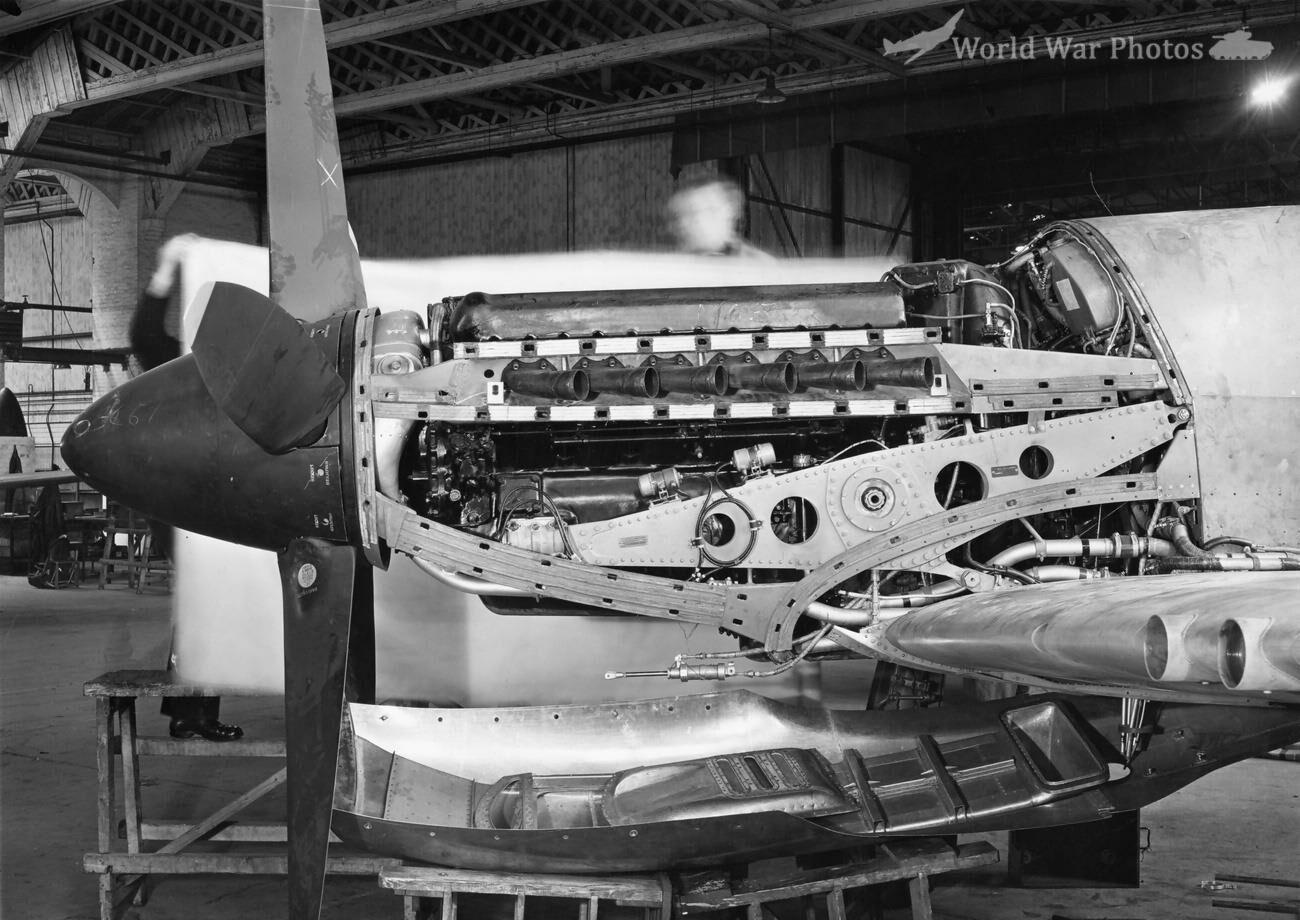The Rolls-Royce Griffon engine, developed as an advanced derivative of the Merlin, was designed to meet the rigorous demands of naval aviation. Here’s a summary of its development and technical features:
Development and Design Characteristics
Origins and Purpose:
- Developed at the request of the Fleet Air Arm, the Griffon was meant to power larger and heavier naval aircraft, maintaining high performance under demanding conditions.
Engine Configuration:
- The Griffon was a 60° V-12 engine, similar in configuration to the Merlin but significantly larger, with a 6.0-inch bore and 6.6-inch stroke, resulting in a displacement of 2239 cubic inches—36% greater than the Merlin.
Technical Innovations:
- The engine incorporated a number of advancements, including the relocation of camshaft and magneto drives to the front. This reduced engine length and allowed the Griffon to be fitted into existing Merlin-powered airframes.
- Early versions had a supercharger driven from the front but later shifted to a more conventional setup with the drive taken from the rear of the crankshaft, similar to the Merlin.
Supercharging and Performance:
- The Griffon initially featured single-stage, two-speed supercharging, later evolving to two-stage, two-speed supercharging with intercooling and aftercooling, achieving outputs up to 2350 hp. The engine also experimented with three-speed, two-stage supercharging in its 100-series.
Unique Features:
- The Griffon’s crankshaft rotated in the opposite direction compared to previous Rolls-Royce engines, aligning with SBAC guidelines.
- The engine had a distinctive exhaust note, known as the “Griffon Growl,” due to different firing orders and valve timings compared to the Merlin.
- It featured an advanced end-to-end crankshaft lubrication system and a cleaner design with fewer external oil lines.
Handling and Propulsion Innovations:
- The Griffon presented significant torque at takeoff, necessitating modifications for aircraft stability, including the use of contra-rotating propellers in later versions. This configuration was especially critical for naval operations, such as the carrier-based Seafire, to mitigate torque effects during takeoff and landing.
Applications and Legacy:
- The Griffon powered various aircraft, including the later versions of the Supermarine Spitfire, Seafire, and Supermarine Spiteful. It was particularly noted for enhancing the performance and versatility of these aircraft in both air superiority and ground attack roles.
The Griffon represented a significant leap in piston engine technology during World War II, combining lessons learned from the Merlin with new innovations to meet the evolving demands of aerial warfare.
